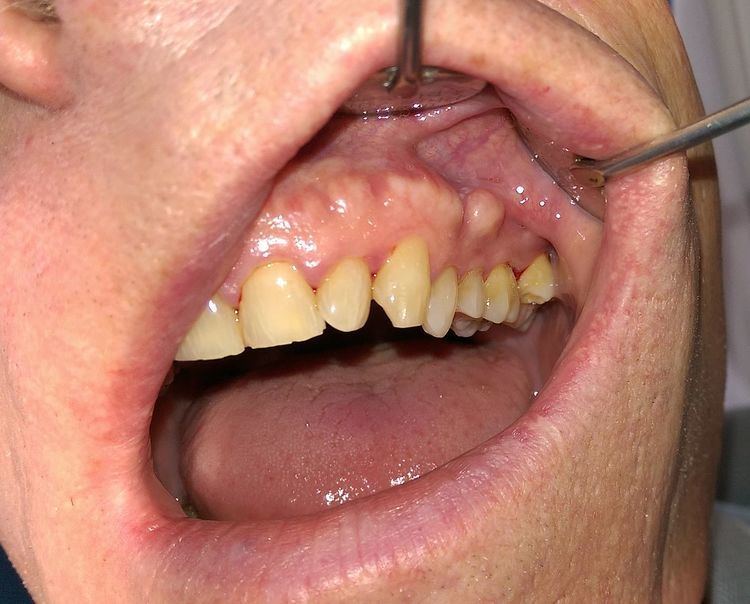ICD-10 K10.8 | ||
 | ||
A buccal exostosis (also termed alveolar exostosis), is an exostosis (bone prominence) on the buccal surface (cheek side) of the alveolar ridge of the maxilla or mandible. Some consider them a variation of normal anatomy rather than a disease.
Contents
Signs and symptoms
Formation on the lower jaw occurs much less commonly than on the upper jaw. They are painless and have no risk of turning into cancer, although they may slowly expand over years, or sometimes more rapidly.
Causes
Why buccal exostoses form is unclear, but it may involve bruxism (tooth clenching and grinding), and genetic factors. Typically they first appear in early adulthood.
Diagnosis
Buccal exostoses are considered different entities to osteomas (e.g. seen in Gardner syndrome), even though the two lesions are histopathologically identical.
Management
Generally buccal exostoses require no treatment. However, they may be easily traumatized causing ulceration, or may contribute to periodontal disease if they become too large, or can interfere with wearing a denture (false teeth). If they are creating problems, they are generally removed with a simple surgical procedure under local anesthetic.
Epidemiology
They are more common in males than females, occurring in a ratio of about 5:1. They are strongly associated with the presence of torus mandibularis and torus palatinus.
